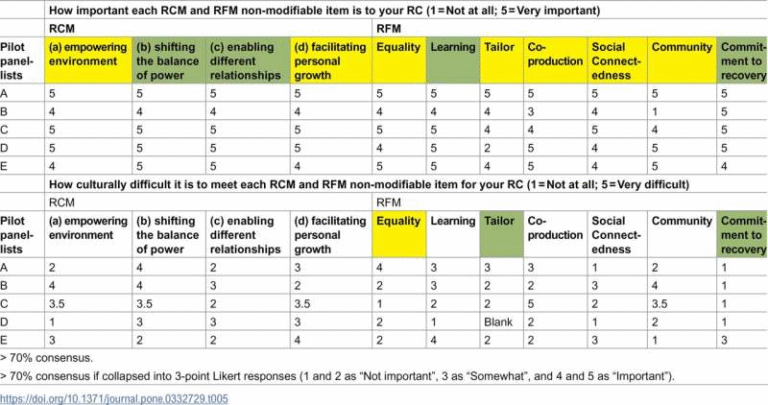Children of Parents with Mental Disorders Face Higher Risk of Early Death, Swedish Study Finds
A massive new study from Karolinska Institutet has uncovered worrying evidence that children of parents with mental health disorders face a significantly higher risk of dying prematurely, with the danger especially high when both parents are affected. The findings, published in JAMA Psychiatry (2025), highlight the need for stronger family support systems and better mental health care that takes the well-being of children into account.
What the Study Looked At
This wasn’t a small study by any means. Researchers from Karolinska Institutet analyzed data from Sweden’s national registers, covering an impressive 3,548,788 births between 1973 and 2014. Each child in the study was linked to their biological parents, and researchers followed them until December 31, 2023 — a total of five decades of follow-up data. By the end of the study, the participants were between 9 and 51 years old.
After excluding about 725,654 births where the father’s information was missing, the team had data on 1,791,038 mothers and 1,762,659 fathers. This immense dataset gave them the power to explore how different types of parental mental disorders influenced offspring mortality across nearly all of life’s stages — from infancy to middle age.
Types of Parental Mental Disorders Considered
The researchers relied on Sweden’s National Patient Register, which records hospital and specialist diagnoses using the ICD-8, ICD-9, and ICD-10 classification systems. They looked at a wide range of mental health conditions, including:
- Alcohol or substance use disorders
- Psychotic disorders (like schizophrenia)
- Mood disorders (such as depression and bipolar disorder)
- Anxiety or stress-related disorders
- Eating disorders
- Personality disorders
- Intellectual disability
This broad categorization allowed them to compare how different mental health diagnoses might affect the mortality risk of offspring.
How Mortality Was Measured
Deaths were tracked through Sweden’s Cause of Death Register, which provided data on both natural causes (like cardiovascular disease and cancer) and unnatural causes (such as suicide and accidents). Researchers didn’t just lump everything together — they carefully calculated rates and risks for all-cause, natural, and unnatural deaths, and even performed cousin comparison analyses to control for shared family factors like genetics and socioeconomic background.
Key Findings
The numbers are striking. Among offspring exposed to parental mental disorders, there were 12,725 deaths during follow-up, corresponding to a mortality rate of 7.93 deaths per 10,000 person-years. Among unexposed offspring — those whose parents had no recorded mental disorders — there were 30,087 deaths, translating to 3.55 deaths per 10,000 person-years.
That’s more than double the risk, and the differences held up even after adjusting for other variables.
Here are the detailed findings:
- All-cause mortality: Hazard Ratio (HR) 2.13 (95% Confidence Interval: 2.08–2.18)
- Natural causes: HR 1.88 (95% CI: 1.83–1.95)
- Unnatural causes: HR 2.45 (95% CI: 2.37–2.54)
This means that children of parents with mental disorders were about twice as likely to die of natural causes and more than twice as likely to die of unnatural causes compared to those without such exposure.
Which Disorders Carried the Highest Risks?
Not all mental health conditions had the same impact. The study found differences across diagnostic categories:
- Eating disorders: HR 1.58 (lowest relative risk)
- Intellectual disability: HR 2.22 (highest relative risk)
Other disorders, such as mood, anxiety, or psychotic conditions, also showed elevated risks within that range.
When Both Parents Have Mental Disorders
The study also looked at what happens when both parents are diagnosed with mental disorders — and the results were even more concerning.
- Any-cause death: HR 3.35
- Natural death: HR 2.57
- Unnatural death: HR 4.24
The risk peaked when both parents were diagnosed during the child’s age of 1–2 years — a crucial developmental period. During that stage, the hazard ratios skyrocketed to:
- Any death: HR 4.92
- Natural death: HR 4.50
- Unnatural death: HR 5.27
These findings suggest that early-life exposure to parental mental disorders has long-lasting and possibly compounding effects.
The Risk Persists Into Adulthood
Interestingly, the study found that the increased risk of death persisted across the lifespan — not just in childhood or adolescence. The highest relative risks were actually observed in adulthood, meaning the impact of parental mental illness can follow offspring well into their adult years.
Even when the researchers adjusted for shared family factors using cousin comparisons, the results stayed largely the same. This suggests that the elevated mortality risk cannot be fully explained by genetics or shared environment.
Why These Findings Matter
This research adds to a growing body of evidence showing that mental health issues don’t just affect individuals — they affect families, and especially children. While many studies have shown that children of parents with mental illness are at higher risk for emotional, behavioral, and developmental challenges, this study is one of the first to show a clear link to long-term mortality.
In other words, the consequences aren’t only psychological — they’re physical and life-threatening.
The findings also emphasize the importance of early intervention. When parents struggle with mental disorders, ensuring that children receive consistent care, emotional support, and stable living conditions could make a real difference in their long-term outcomes.
The Bigger Picture: Understanding Mental Health and Family Impact
It’s important to note that mental disorders themselves are complex and multifactorial. They can arise from genetic vulnerabilities, environmental stress, social isolation, or trauma. The ways these factors interact within families are equally complex.
For example, parental mental illness can influence child development through several pathways:
- Biological: Shared genetic risks for psychiatric and medical conditions.
- Psychological: Reduced emotional availability or inconsistent parenting.
- Social: Increased family stress, economic hardship, or stigma.
Each of these can compound over time, affecting children’s physical and mental health.
Public Health Implications
The authors of the study point out that these findings have major public health implications. Mental disorders are highly prevalent, and as the population ages, the number of affected families continues to grow. The researchers suggest that targeted family support — such as parenting interventions, integrated mental health services, and early detection programs — could potentially reduce premature deaths in future generations.
They also call for further research to identify which types of interventions work best and when they should be delivered — especially during a child’s early years, when resilience and coping patterns are forming.
Limitations and Strengths
Like all research, this study has limitations. The data relied on hospital and specialist records, meaning that people treated only in primary care might have been missed. It also didn’t include detailed information on lifestyle factors like smoking, physical activity, or social support.
However, the study’s strengths far outweigh its limitations. The massive sample size, decades-long follow-up, and the ability to link family members across generations make this one of the most comprehensive analyses ever conducted on this topic.
A Clear Message
The takeaway is clear: children of parents with mental disorders face a significantly higher risk of dying early, especially from preventable or unnatural causes. Supporting mental health in parents could save not just one life, but potentially two generations at once.
Research Paper: Parental Mental Disorders and Offspring Mortality up to Middle Age – JAMA Psychiatry, 2025






